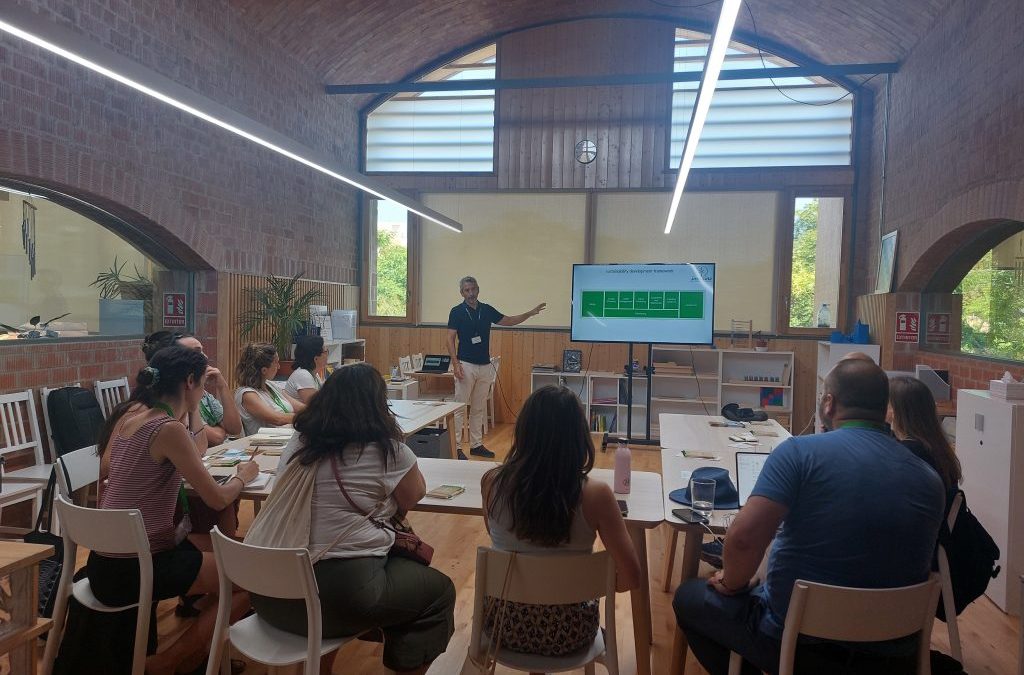As the webinar was organised as part of the 2025 Study Tour, taking place in Valencia (Spain) on July 1st and 2nd, IWG5-CSA partners and IWG5 Chair and Co-Chairs were present at the Imagine Montessori School (Valencia).
Francesco Guarino (University of Palermo, Co-Chair of IWG5) opened with a clear statement: building renovation is the biggest challenge in decarbonizing the built environment. He introduced the agenda, focusing on National Building Renovation Plans (NBRPs) and their role in decarbonizing our energy systems.
Cornelia Partsch (ECTP) presented NBRPs and shared the recommendations crafted by IWG5. She noted that the most recent renovation plans were published in 2020, but under the updated Energy Performance of Buildings Directive (EPBD), member states must submit new, more comprehensive plans by the end of 2026, with revisions every five years thereafter.
Key challenges identified via the IWG5 survey, distributed among member states and industry stakeholders, include:
- Insufficient funding
- Administrative hurdles
- Fragmented communication across ministries and sectors
She emphasized the need to boost outreach efforts, adopt regional approaches tailored to local contexts, and create synergies between Sustainable Construction Practices (SCPs) and NBRPs.
Teresa Cuerdo (IETcc‑CSIC, Co-Chair of IWG5) shared highlights from the IWG5 White Paper on Just Transition. Central themes included:
- Ensuring social equity and not leaving anyone behind in the renovation process
- Prioritizing building occupants and communities
- Engaging citizens through renewable energy communities to foster ownership and support
She noted that a separate White Paper addresses the skills needed by building professionals to support this energy transition.
Miriam Navarro from the Valencia Institute of Buildings opened her presentation by introducing the DeCO2 project and detailing the role and work package led by her institute.
The DeCO2 initiative—entitled Dynamic Decarbonization Pathways Framework—aims to accelerate sustainable, circular renovation across Europe’s built environment by combining technological, social, and policy innovations. In its Spanish demo led by the Valencia Institute (IVE), the project transforms a historical library in Castellón into a controlled dismantling case—unlocking reusable construction and demolition materials—and builds an experimental facility on the UPV campus using reclaimed and innovative recycled materials. IVE’s work package covers materials sourcing, digital twins, lifecycle tracking, and pilot testing of recycled and 3D-printed components in a circular renovation ecosystem.
Through this approach, IVE empowers building professionals with circular renovation tools—such as material tracking, eco-design data systems, and demo case insights—to embed sustainability, reuse, and resource efficiency at every stage of the renovation process.
Key takeaways of the webinar:
- Zero‑energy building (ZEB) frameworks alone are insufficient: they tend to emphasize energy balance and renewable supply, overlooking critical dimensions like climate resilience, occupant comfort, holistic performance, and social implications. Many studies argue for a broader, systemic scope that extends beyond individual buildings—embracing district‑scale interaction, flexibility, and urban resilience.
- Resilience and flexibility should be core to building policy, not merely optional add‑ons: policies must integrate adaptive design, demand‑response capabilities, and shock‑absorbing mechanisms as foundational elements—mirroring emerging frameworks in infrastructure and urban resilience planning.
- Academic and policy research increasingly converges on this imperative: recent reviews highlight the value of integrated indicators, advanced modelling that captures flexibility and robustness trade‑offs, and pilot‑tested tools to operationalize combined sustainability‑resilience strategies in buildings and neighborhoods.
You can download the presentations here and watch the recording on YouTube.


